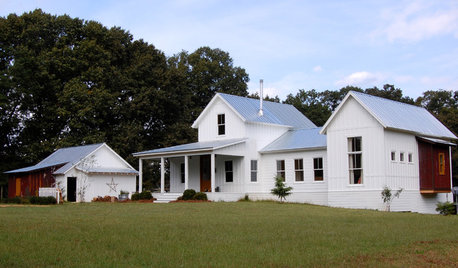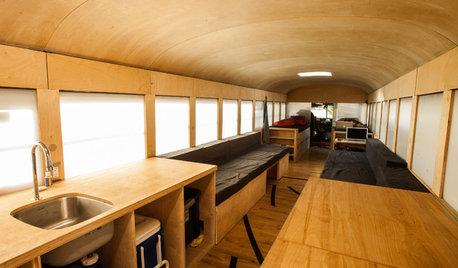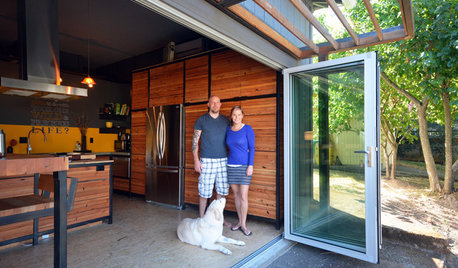DIY Flow-Through grid spacing/harvest mechanism
alabamanicole
13 years ago
Related Stories

GREEN BUILDINGOff the Grid: Siting and Building to Conserve Energy
Look to low-tech solutions for big energy savings when you’re constructing a home
Full Story
GREEN BUILDINGHow to Harvest Rainwater for Your Garden
Conserve a vital resource and save money by collecting stormwater for irrigation in a barrel or tank
Full Story
COLORTake a Tour of Popular Colors Through the Decades
Journey back in time to see how culture and the economy have affected the colors of our homes
Full Story
COLORFUL HOMESMy Houzz: Colorful and Clever DIY Touches Fill an Alabama Farmhouse
Antiques, repurposed items and a whole lotta hard work give a family home cheery, personable style
Full Story
HOUZZ TOURSMy Houzz: Salvage Finds and DIY Love in Rhode Island
A Providence couple layers on meaningful mementos and hands-on style for a personalized interior palette
Full Story
FUN HOUZZBuckle Up for a Modern Mobile Cabin in a Bus
See an innovative off-the-grid living space designed by an architecture student — with room for 6 and a sunbathing spot
Full Story
DISASTER PREP & RECOVERYRemodeling After Water Damage: Tips From a Homeowner Who Did It
Learn the crucial steps and coping mechanisms that can help when flooding strikes your home
Full Story
HOUZZ TOURSMy Houzz: Converted Pennsylvania Pretzel Factory
These DIY-savvy Pennsylvania homeowners turned a cinder-block shell into a vibrant neighborhood gathering place
Full Story
MY HOUZZHouzz TV: A Couple’s Garage Becomes Their Chic New Home
Portland, Oregon, homeowners find freedom in a city-approved garage home with DIY industrial flair
Full Story
GREEN BUILDINGInsulation Basics: Heat, R-Value and the Building Envelope
Learn how heat moves through a home and the materials that can stop it, to make sure your insulation is as effective as you think
Full StoryMore Discussions






bigtexworms
equinoxequinox
Related Professionals
Allentown Landscape Architects & Landscape Designers · Surprise Landscape Architects & Landscape Designers · Wixom Landscape Architects & Landscape Designers · Brockton Landscape Contractors · Canton Landscape Contractors · Chesapeake Ranch Estates Landscape Contractors · Eureka Landscape Contractors · Fair Oaks Landscape Contractors · North Highlands Landscape Contractors · Pacifica Landscape Contractors · Placerville Landscape Contractors · Conneaut General Contractors · Fort Salonga General Contractors · Hampton General Contractors · Parkersburg General Contractorsrandomz
lkittle
alabamanicoleOriginal Author
equinoxequinox
randomz
11otis
pjames
fosteem1
sbryce_gw
alabamanicoleOriginal Author
sbryce_gw